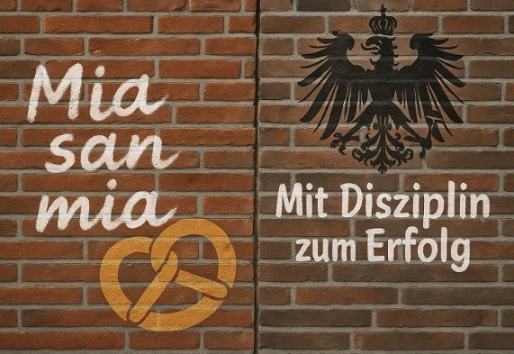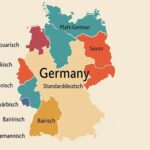
Germany is a nation famous for beer, precision engineering, and a strong sense of order – but look closer, and you’ll discover a country stitched together from vastly different cultural regions. Chief among these historic rivalries is the one between Bavaria and Prussia. What began as a political and religious power struggle centuries ago has evolved into a layered competition over identity, values, and the very meaning of what it is to be German.
In this guide, we’ll explore how the Bavarian-Prussian divide came to be, what it still means in modern Germany, and why this cultural fault line remains one of the most fascinating aspects of German identity today.
Who Are the Bavarians and Prussians?
Before we dive into the rivalry, let’s clarify who we’re talking about.
Bavarians are the people of Bavaria (Bayern), the southeastern state of Germany, known for its Catholic roots, Alpine traditions, Lederhosen, beer culture, and strong regional pride. Munich is its capital and cultural hub.
Prussians originally hailed from Prussia (Preußen), a former kingdom in northeastern Germany, which played a dominant role in German unification. Its heartland included Berlin, Brandenburg, and parts of what is now Poland and Russia. Prussia was historically Protestant, militarized, and bureaucratic.
Today, the old Kingdom of Prussia no longer exists, but the term “Prussian” is still used symbolically to refer to northern German characteristics – discipline, rationality, centralization, and secularism.
A Tale of Two Germanys
For centuries, Germany wasn’t a unified country but a patchwork of duchies, principalities, and city-states. Among them, Bavaria and Prussia rose to prominence, often clashing for political and cultural dominance.
- Prussia grew into a major European power in the 18th and 19th centuries, famous for its military efficiency and Enlightenment-influenced governance.
- Bavaria, by contrast, was steeped in Catholic conservatism, agrarian values, and local tradition, resisting Prussian attempts at dominance.
Their rivalry came to a head during the 19th century, particularly during the wars of German unification. Bavaria resisted Prussian-led unification until it was finally absorbed into the new German Empire in 1871 – reluctantly and with strong conditions to preserve its autonomy.
Related: Why Germans Love Rules (And What That Says About Their Culture)
Cultural Differences: More Than Stereotypes
To this day, many Germans still joke about the cultural contrasts between the south (Bavaria) and the north (the old Prussian regions). While stereotypes can be misleading, some core differences do reflect historical legacies.
| Trait | Bavarian | Prussian |
|---|---|---|
| Religion | Predominantly Catholic | Predominantly Protestant |
| Attitude | Warm, festive, regional pride | Formal, reserved, national focus |
| Political Leaning | Conservative (CSU stronghold) | Historically liberal-socialist |
| Dress | Lederhosen, Dirndl | More formal, subdued |
| Language | Dialect-rich, strong Bavarian identity | Standard High German emphasis |
| Humor | Loud, earthy, regional satire | Dry, ironic, often understated |
| Bureaucracy | Local-first, traditionalist | Centralized, rationalized |
These cultural differences still influence everything from how people greet one another to how they vote, celebrate holidays, or structure local government.
Bavaria’s Fierce Regional Identity
Bavaria is Germany’s most culturally distinct region. Ask many Bavarians where they’re from, and they’ll say “Bavaria” before “Germany.” The regional dialect, traditional dress, and love of beer halls and Alpine heritage are more than tourist clichés – they’re expressions of local pride.
The state even maintains its own broadcasting service, police force, and in some ways behaves like a “state within a state.” Bavarians are famously resistant to interference from Berlin – a legacy of their resistance to Prussian dominance.
Related: Traditional German Clothing Explained
The Prussian Legacy: Order and Centralization
Although the state of Prussia was officially dissolved after World War II, its cultural legacy lives on in northern Germany’s emphasis on punctuality, discipline, and civic efficiency.
The capital, Berlin, served as the seat of Prussian kings and later the German Empire. The Prussian value system – meritocratic bureaucracy, secular governance, and military order – shaped modern Germany’s institutions.
Even today, many southern Germans still use “Preuße” (Prussian) as a joking, slightly mocking term for northern Germans – implying coldness, inflexibility, or arrogance.
Politics: CSU vs. SPD and Beyond
The Bavarian-Prussian rivalry also plays out in politics.
- Bavaria is the stronghold of the Christian Social Union (CSU), a regional party allied with the national CDU. It champions traditional values, federalism, and regional autonomy.
- Northern Germany, particularly Berlin and the old East German regions, tends to lean toward the Social Democratic Party (SPD) or The Left, favoring more centralized governance and social policy.
This divide mirrors broader themes: Bavaria’s localism vs. Prussia’s centralism; conservatism vs. secular rationalism; festival culture vs. civic duty.
Language and Dialects
Linguistically, the divide is deep. Bavarian dialects (Bairisch) are notoriously difficult for non-natives – and even for other Germans – to understand. Bavarians often joke that “High German” (Hochdeutsch) is a foreign language.
Prussian-influenced regions emphasize standard German and see dialects as informal or outdated. This fuels jokes on both sides: Bavarians mock the Prussian stiffness, while northerners mock the “mountain babble.”
But far from being a nuisance, these linguistic divides reveal the diversity that still exists within a “unified” Germany.
Oktoberfest vs. Efficiency: Cultural Symbols
Cultural symbols sharpen the contrast. For example:
- Oktoberfest represents Bavarian excess, celebration, and communal tradition.
- Prussian order is symbolized in military parades, civil service exams, and state uniforms.
One is warm and boisterous; the other, precise and authoritative. Germany encompasses both – and the friction between the two often fuels humor, art, and satire.
Explore: Oktoberfest Beyond the Beer: Traditions You Didn’t Know Existed
Modern Reflections of the Divide
While the historical rivalry has softened in modern times, traces of it remain visible in:
- Federalism debates (e.g. education, taxes)
- Cultural funding and regional museums
- Media and comedy (Bavarian vs. Berlin stereotypes)
- Sports rivalries (especially between FC Bayern Munich and northern teams)
Germany’s federal structure is one way the country honors its regional differences. Yet the tension between central governance and local autonomy remains a live issue – especially in areas like immigration, COVID policies, and climate regulation.
Why the Rivalry Still Matters
Understanding the Bavarian-Prussian divide is key to understanding Germany’s internal diversity. This rivalry:
- Helps explain regional voting patterns
- Reveals how historical memory shapes identity
- Offers insight into Germany’s evolving national narrative
Far from being obsolete, these contrasts are part of what gives German culture its richness – and what makes national unity a constant balancing act between north and south, past and future.
The rivalry between Bavarians and Prussians isn’t just about beer vs. bureaucracy. It’s a reflection of how Germany continues to negotiate identity, power, and tradition. In a country where unity was forged from patchwork kingdoms, the echoes of old rivalries are still felt – in accents, political debates, humor, and even clothing.
And that’s what makes modern Germany so fascinating: it isn’t just one culture. It’s many, layered together. And that’s something both Bavarians and (former) Prussians can take pride in.
Related articles:
The Evolution of the German Language: From Old High German to Modern Dialects
Heimat: Why Germans Feel So Strongly About Their Hometown







